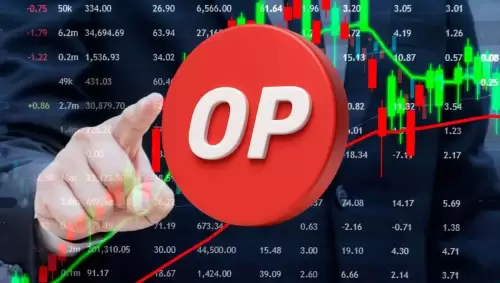 |
|
 |
|
 |
|
 |
|
 |
|
 |
|
 |
|
 |
|
 |
|
 |
|
 |
|
 |
|
 |
|
 |
|
 |
|
Cryptocurrency News Articles
The era of penny production in the United States is slowly coming to an end
May 26, 2025 at 05:44 am
The U.S. Treasury Department announced on May 22 that it will begin phasing out the minting of pennies after more than two centuries of production.

The era of penny production in the United States is slowly coming to an end, but Americans will still be seeing one-cent coins in their change for the foreseeable future.
>Announcing the phasing out of the minting of pennies after more than two centuries of production, the U.S. Treasury Department said on May 22 that it will begin winding down production of the one-cent coin as part of the fiscal year 2024 budget proposals.
Despite this change, the penny will remain legal tender, and retailers will continue to use them in cash transactions until supplies run low.
Why Is the Penny Being Phased Out?
The Treasury Department explained that the decision to wind down penny production is driven by the need to allocate federal funds efficiently, especially in the current economic climate.
The department stated that pennies are “severely underutilized,” with an estimated 114 billion of them sitting idle in jars, drawers, or forgotten containers across the country.
That stockpile could theoretically form a 13-story-high cube of copper and zinc.
“There’s a saying in retail, ‘Never lose a customer over a penny,’” said Jeff Lenard, spokesperson for the National Association of Convenience Stores. “I never really thought of it in these terms, but it applies even more here.”
The Handling of the Change
The move to phase out the penny comes after years of debate over the one-cent coin's economic viability.
Some lawmakers and economists have argued that the penny should be discontinued due to the rising cost of production and the minimal value it provides to consumers.
However, consumer groups and some members of Congress have expressed concern that eliminating the penny would lead to price increases for consumers as businesses round up small purchases to the nearest five cents.
A 2023 poll by the American Consumer Institute, a consumer advocacy group, found that a majority of consumers are opposed to phasing out the penny.
The Treasury Department's proposal to cease penny production will now be passed on to Congress, which will ultimately decide whether to approve the change as part of the final fiscal year 2024 budget.
If approved by Congress, the penny will gradually disappear from circulation as banks and businesses use up their existing supplies of the one-cent coin.
The Hoarding Factor
The penny has been a staple of the U.S. monetary system since 1859, when the Union copper one-cent pieces were introduced during the Civil War.
Over the years, the composition of the penny has changed several times, and today it is made up of 2.5 percent copper and 97.5 percent zinc.
The coin's purchasing power has also diminished significantly due to inflation.
According to the Bureau of Labor Statistics consumer price index, one penny in 1860 had the same buying power as about 30 cents today.
Despite the challenges faced by the penny, it remains a popular coin among collectors and coin enthusiasts.
The one-cent coin is also a symbol of American history and culture, and its disappearance would mark the end of an era in the U.S. monetary system.
As the era of the penny slowly comes to an end, Americans can reminisce about the role this small coin has played in their lives and the impact it will have on the nation's monetary system in the years to come.
input: The U.S. Treasury Department has begun the process of phasing out the penny as part of the fiscal year 2024 budget proposals, according to a May 22 report by USA Herald.
The move, which comes after years of debate over the one-cent coin's economic viability, will see the Treasury gradually wind down production of the penny, which could disappear from circulation within the next few years.
However, despite this change, the penny will remain legal tender, and retailers will continue to use them in cash transactions until supplies run low.
The Treasury Department said the decision to wind down penny production is driven by the need to allocate federal funds efficiently, especially in the current economic climate.
The department stated that pennies are “severely underutilized,” with an estimated 114 billion of them sitting idle in jars, drawers, or forgotten containers across the country.
That stockpile could theoretically form a 13-story-high cube of copper and zinc.
“There’s a saying in retail, ‘Never lose a customer over a penny,’” said Jeff Lenard, spokesperson for the National Association of Convenience Stores. “I never really thought of it in these terms, but it applies even more here.”
The move to phase out the penny comes after years of debate over the one-cent coin's economic viability.
Some lawmakers and economists have argued that the penny should be discontinued due to the rising cost of production and the minimal value it provides to consumers.
However, consumer groups and some members of Congress have expressed concern that
Disclaimer:info@kdj.com
The information provided is not trading advice. kdj.com does not assume any responsibility for any investments made based on the information provided in this article. Cryptocurrencies are highly volatile and it is highly recommended that you invest with caution after thorough research!
If you believe that the content used on this website infringes your copyright, please contact us immediately (info@kdj.com) and we will delete it promptly.


























































